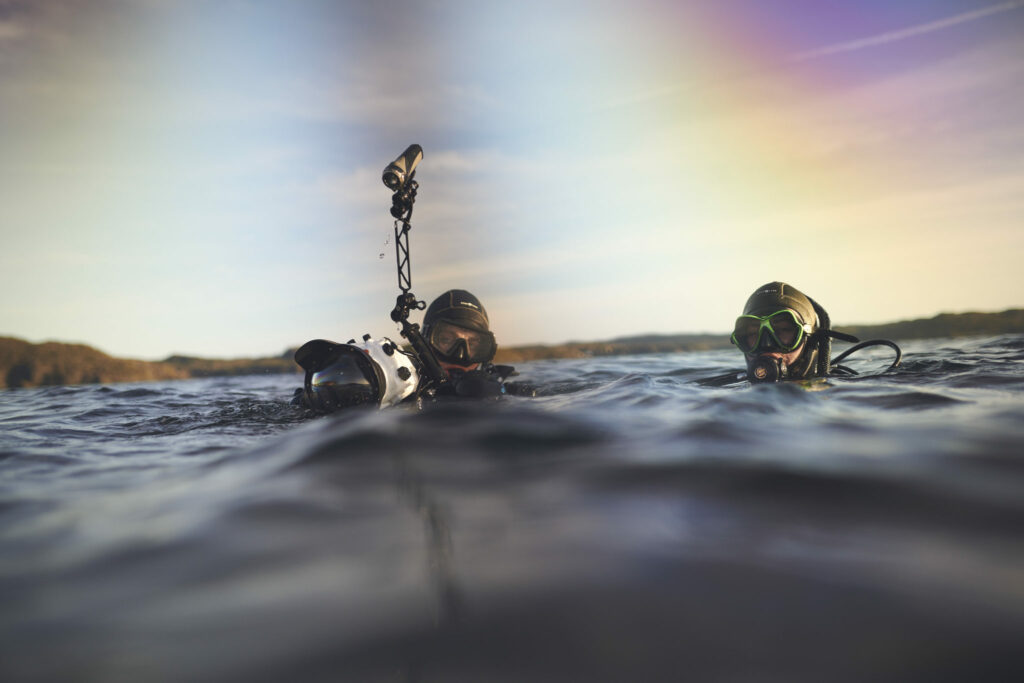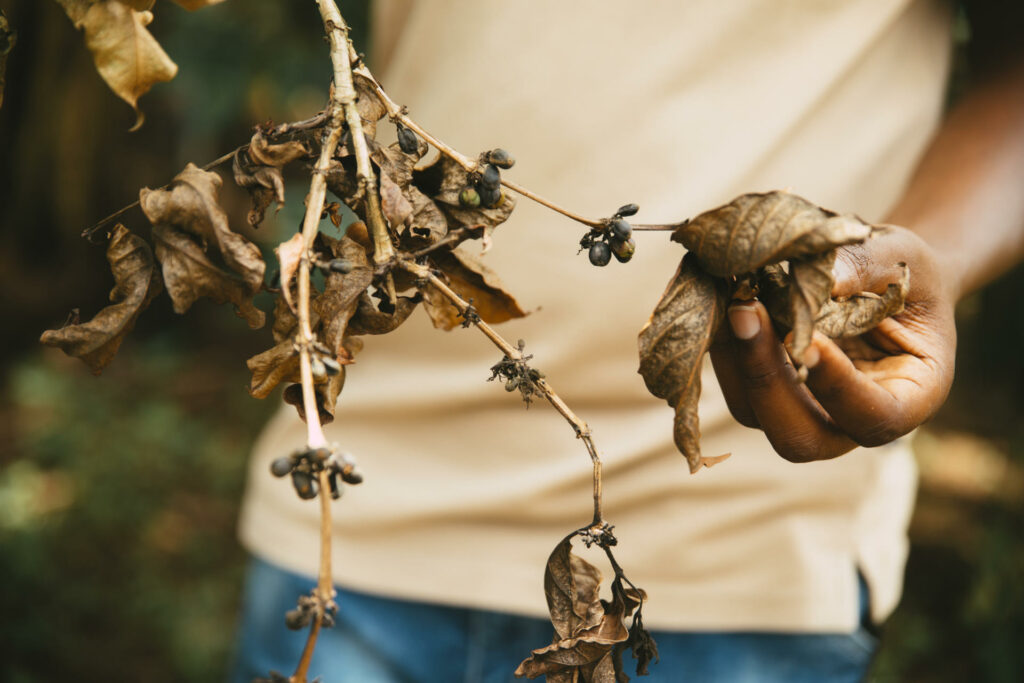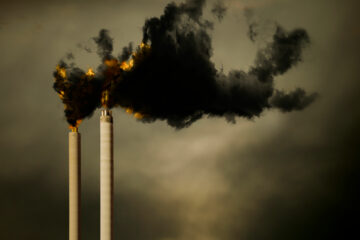The Green Film Festival Of San Francisco is Finally Here!
How many environmental-themed film festivals would willingly program a film about homicidal blue jeans? Were this question asked in other parts of the country, the answer would be difficult. Fortunately, here in the City we have the Green Film Festival Of San Francisco (hereafter “Green Film”) which had no qualms about presenting that horror/dark comedy film about murderous denim clothing (For the curious, the film in question is called “Slaxx,” and it currently streams on Shudder).
This programming decision should not be surprising. The folks behind Green Film are the wonderfully offbeat folks at S.F. Indie Fest. Whether they’re bringing out the latest edition of DocFest or trying something new such as the Decibels Film Festival, their film festival programming consistently strikes the right balance between straightforwardness and adventurous freakiness.
This year’s Green Film runs April 14-24, 2022 with both online availability and in person screenings at the Roxie Theatre. It offers a total of 85 independent feature and short films from around the world. The films’ subjects range from efforts to save the North Atlantic Right Whale (Last Of The Right Whales) to a dinner that eventually gives gross-out payback to environmental despoilers (The Feast).
However, this year’s offerings deliver a message bigger than loving the wonders of Mother Earth (e.g. A Year In The Garden or Restoring Italy’s Wild Heart). Quite a few films challenge the viewer to question the status quo of humanity’s relationship to nature, whether via direct example (Elk In Paradise: Rancher, Ecologist, Hunter) or via fictional imaginings (Silent Running, which is getting a 50th anniversary screening).
Here’s a look at some of this year’s other Green Film offerings.
Local filmmaker Kate Schermerhorn kicks off Green Film’s Opening Night at the Roxie with her personal documentary Do I Need This? The director uses her own life as a lens for examining the American mania for excessive consumption. Not only does she need to deal with accumulated things gathering dust in her garage, but her parents’ decision to downsize their accumulated possessions sets off complicated feelings for the director regarding the older couple’s life changes. Maybe happiness isn’t keeping a huge amount of stuff?
One person who’s rejected the food part of the American consumerist excess lifestyle is the musician Moby. Lindsay Hicks’ animated short “Why I’m A Vegan” shows how Moby embraced both veganism and advocacy for animal rights.
Another reason for turning away from excessive consumption is the problem of getting rid of the waste produced by such consumption. One dirty secret of European life is that way too many European countries still prefer to send their consumer waste elsewhere rather than develop an effective recycling program. The current problem of burning Polish landfills turns out to be a new iteration of old corrupt business practices pioneered by Italy’s Camorra. Maclej Kuciel’s documentary short “The Trash Mob And Burning Landfill Sites” recounts this shameful history as well as present-day efforts to turn this situation around.
Ikeshima, the setting of Andrea Pellerani’s feature documentary “Dreaming An Island,” is a place where mass consumption doesn’t exist. On this Japanese island, the few inhabitants left try to pretend life is normal despite the complete stoppage of modern-day economic activity.
Northeast India’s Khasi forests are where the natural rarity known as Living Root Bridges can be found. These structures have been built and maintained by inidgenous inhabitants of the forest over generations. But as Sapan Narula’s documentary short “Unseen Meghalaya” shows, climate change and modernization have endangered the future of these ancient structures. Forest native Morningstar Khongthaw has taken up the challenge of keeping this ancestral heritage preserved.
To Americans, January 6 has become the day the Orange Skull’s thugs attempted to disrupt the democratic transition of power. To the Labrador Inuits, the evening of that day is an annual occasion for a communal celebration of culture and tradition. Key to the celebration are the Nalujuit, people wearing skeletal, animal or supernatural masks laying “siege” to the Inuit community of Nain. Inuk filmmaker Jennie Williams’ short documentary “Nalujuk Night” visually immerses outsiders in this unusual event which mixes fear and courage in equal measure.
Peter D. Hutchison and Lucas Sabean’s powerful feature-length documentary “Devil Put The Coal In The Ground” takes viewers to the Appalachian region. Ordinary West Virginians talk about the devastation and misery left by the coal industry’s decline. From the opioid epidemic to irreparable economic damage, the effects documented here will make viewers further despise Senator Joe Manchin and other apologists for the coal industry.
Green Film viewers may also have little sympathy for the people fooled by supposed representatives of oil behemoth Total. Environmental activists pretending to be oil company officials pranked their marks into believing in the feasibility of the “ReHabitat” plan to relocate animals away from the East African Oil Pipeline to habitats in France. Keil Orion Troisi’s documentary short “Total Disaster” captures the prank and its important point.
A more experimental critique of a particular oil byproduct comes from Jess Irish’s animated short documentary “This Mortal Plastik.” How did an invention created with noble intentions turn into an environmental bane? A bereaved mother finds out on a journey across oceans and through history in search of answers.
Is it a noble cause or an impossible task to clean up the ocean floor of human-generated garbage? Newfoundland diver Shawn Bath, the subject of Cody Westman’s documentary feature “Hell Or Clean Water,” has single-handedly removed 15,000 pounds of garbage from Atlantic harbors. But it might be a futile effort given the amount of trash accumulated on the ocean floor from decades of tourist activity and commercial fishing.
Award-winning war photographer Rita Leistner makes her feature film debut with her documentary “Forest For The Trees.” Before she photographed conflict zones, Leistner planted trees in the British Columbian wilderness. Her film lets viewers follow the souls who work long hours on insanely rugged terrain to restore the area’s decimated forests. It takes a certain type of person to perform this work, and Leistner lets viewers meet these people on their terms.
The 1988 fire that wound up scorching 1.5 million acres of Yellowstone National Park is recounted in Jerry van de Beek and Betsy De Fries’ animated short “Yellowstone 88 – Song Of Fire.” Not only did the fire rage unabated for months, but more park fauna wound up dying from hunger and exhaustion than from the flames.
Maggie O’Dea’s short documentary “Keystone” could be described as a thought experiment. What if you could restore bison herds to the western prairies? The positive consequences seen by the film include opening up land to grow food for human consumption and reducing the need for GMO corn.
A study of the farming status quo can be found in Marina Fomenko’s short documentary “Daybreak, Sunset, Cow Milk.” The film follows one day in the life of a declining Siberian cattle farm. It’s a schedule of milking sessions, future cow breeding, and sending the pumped out milk on to the dairy.
Small coffee farmers in Costa Rica and Tanzania, on the other hand, know that status quo farming will not keep their livelihood going. Climate change has brought about temperature increases, disease, and other problems that could halve the land usable for growing Arabica coffee beans in less than three decades. Unfortunately, many of these farmers lack the funds to move to climate-smart agriculture. Hedvika Michnova’s documentary short “It’s Bean Too Hot” lays out this urgent problem.
Can seven courageous eco-visionaries change an industry dominated by four big poultry breeding companies that annually creates 40 million dead male chicks in Germany alone? Tino Wondoliek’s short documentary “Egg-volution” follows an assorted group of individuals trying to evolve the poultry industry. Their members include a young agricultural engineer and an organic poultry breeder couple.
A lyrebird, for the uninitiated, is an Australian forest songbird whose singing ability is sophisticated enough to imitate the sound of a chainsaw cutting down a tree. In Mark B. Pearce’s documentary feature “The Message Of The Lyrebird,” wildlife cinematographer Nick Hayward heads into Australia’s forests to learn whether lyrebirds can imitate sounds of human origin in the wild. If so, what does that bit of avian mimicry say about human encroachment on the forest? Along the way, Hayward talks to experts ranging from a lyrebird sound recordist to a Knowledge-Holder descended from the People of the Lyrebird.
Simona Denicolai and Ivo Provoost’s short film “Hello, Are We In The Show?” may be structured like a nature documentary. But this animated depiction of life in the Sonian Forest doesn’t bother hiding the presence of city life in the nearby metropolis of Brussels.
For those who want to get their animal cuddlies on, Cheryl Allison’s documentary short “Honk” might do the job. The titular bird has been abandoned in a city park and alternately looks for both food and friends. Allison is also lonely thanks to coronavirus lockdowns and social distancing. When these two cross paths and become friends, they wind up inspiring other people around the world also trying to survive coronavirus.
Providing a different sort of inspiration are the Maasai women of “Team Lioness – Kenya’s All-Female Anti-Poaching Unit.” Jake Tupman and Jack Somerville’s documentary portrait of these Amboseli National Park rangers shows how their daily work searching for injured animals and poachers upends traditional gender stereotypes in the country.
What if people changed their attitudes towards wildlife from toleration to learning to share the landscape with them? For the endangered Florida panther and the people of Florida, that attitude change could result in mutual thriving. That’s the argument made by William Freund’s documentary short “Wildlife In Our Backyard.”
Two San Francisco urban coyotes are the subjects of Nick Stone Schearer’s “Don’t Feed The Coyotes.” This documentary short from a local filmmaker follows coyotes Scout and 15F over the course of several years via the perspectives of the two very different researchers studying them.
Philip Glass’ music provides the sonic backdrop for Enid Baxter Ryce’s experimental historical documentary “War And The Weather.” How has this new science of atmospheric rivers impacted the American West’s colonization? Watch and find out.
Closing this year’s Green Film out is “A Machine To Live In,” a hybrid documentary which takes viewers on a visual tour of Brasilia. Yoni Goldstein and Meredith Zielke’s film shows how the Space Age-styled capital of Brazil boasts a municipal architectural style that’s equal parts dreams of lost utopias and mathematical precision. Add in a thumping electronic soundtrack, and the only way watching this film can be any trippier is if the viewer ingested a recreational pharmaceutical or two beforehand.
Whether viewers choose to take in this year’s Green Film offerings online or in person at the Roxie, hopefully the films mentioned above will either be on these viewers’ lists or will inspire them to seek out something else in the program more to their liking.














